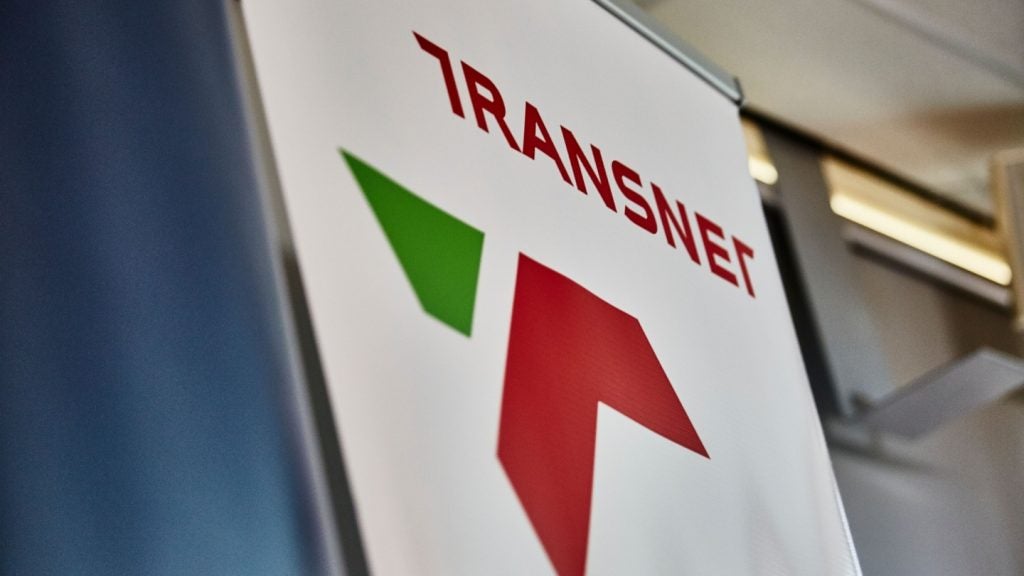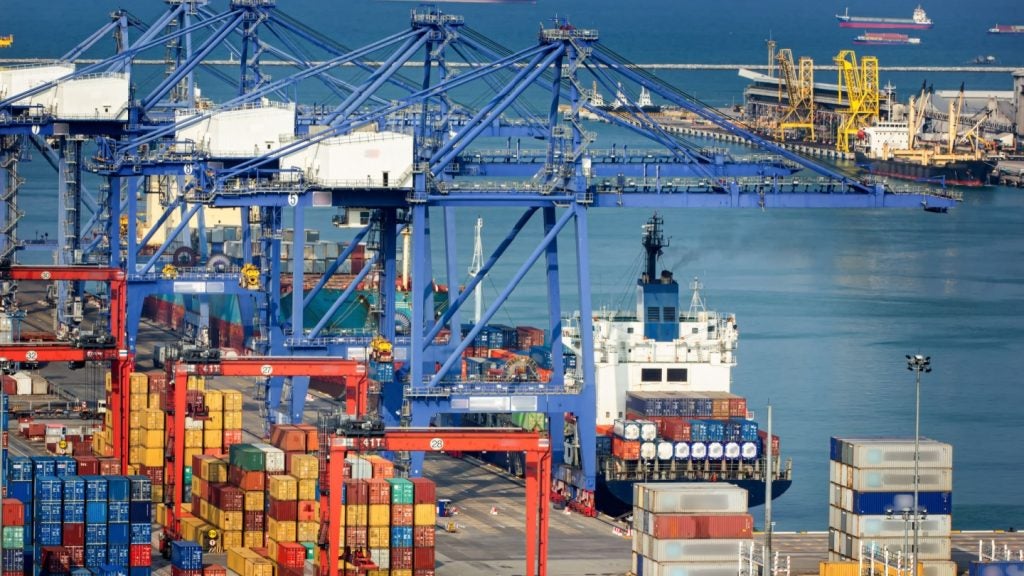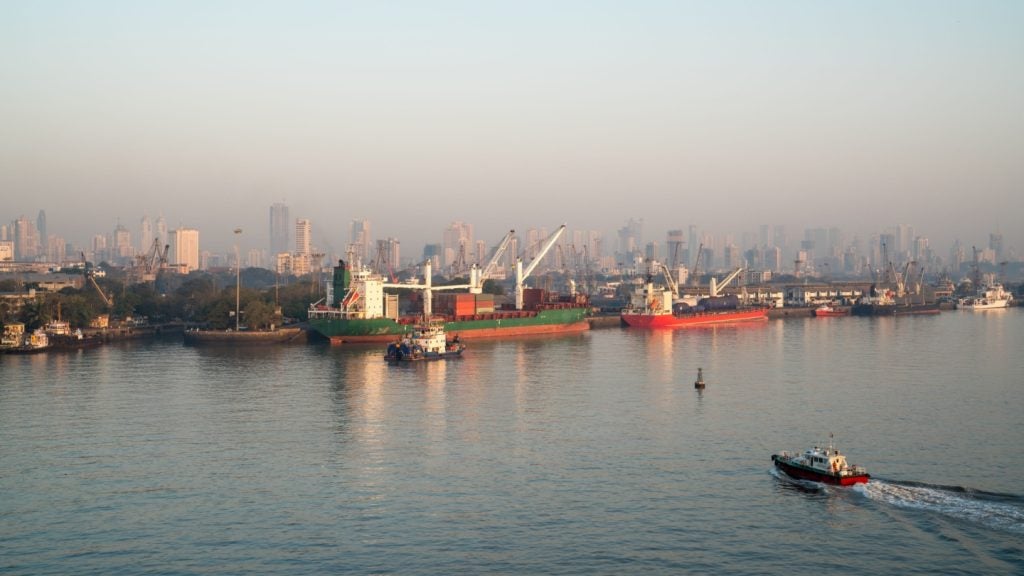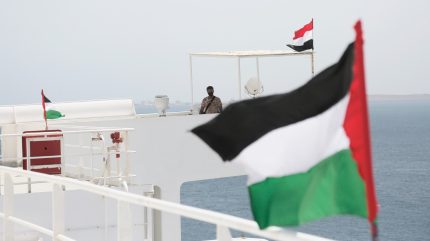
Over the past six months, repeated attacks by Yemen’s Houthi militia group on ships in the Red Sea have spread havoc in a region that 12% of all global trade transits through.
Journeys through the Suez Canal, Red Sea and Bab al-Mandab Strait have dipped drastically, with ships forced to circumnavigate the Cape of Good Hope and African continent – at considerable extra time and cost.
Despite a comparative lull in attacks in May, there are recent signs that the Iran-backed Houthis are resuming their maritime attacks, which the group said is in solidarity with Palestine amid Israel’s military offensive.
Ship Technology took stock of the past eight months of Red Sea chaos.
May 2024
On 23 May the United Kingdom Maritime Trade Operations (UKMTO) reported a missile attack on a merchant vessel 98 nautical miles south of Al Hudaydah, on Yemen’s southwestern coast. The crew and vessel are reportedly safe and proceeding to the next port of call after the “incident”.
Fears of a return to near-daily – and perhaps more wide-reaching – shipping attacks were compounded by a senior US defence official’s admission on Wednesday (22 May) that the Houthis possess missiles which can reach the Mediterranean Sea.
The Houthis said they only target Israeli, UK or US-affiliated vessels, but ships of any nation have been attacked indiscriminately. On 18 May, the Houthis hit a tanker carrying Russian and Venezuelan oil to China with an anti-ship missile, knocking out its propulsion and steering.
Other prominent flashpoints in May included Houthi forces launching four separate uncrewed aerial systems (UASs) over the Gulf of Aden and Red Sea on 6 May. US soldiers brought down two, a coalition ship engaged the third, and the fourth crashed into the sea.
April 2024
Aside from a brief hiatus from 16 to 24 April, last month saw a near-daily barrage of Houthi attacks.
On 30 April, the militia claimed an attack on the MSC Orion, a container ship owned by Zodiac Maritime, an international shipping company in turn owned by Israeli billionaire Eyal Ofer. That attack was one of four in the Indian Ocean and Red Sea during that week.
A week earlier, a UK Royal Navy warship intercepted another anti-ship ballistic missile over the Gulf of Aden which was intended for the US-flagged, owned and operated MV Yorktown. US forces also downed four drones over Houthi territory on 24 April.
MV Yorktown was also unsuccessfully targeted on 9 April, the day after the Houthis launched an anti-ship ballistic missile toward the UK-owned MV Hope Island. No serious damage was inflicted on the cargo vessel, which was escorted by a coalition warship in the Gulf of Aden.
March 2024
Incidents were reported on all but nine days of March.
The volume of ballistics launched was higher, indicative of healthy Houthi weapons stockpiles. On 18 March, for instance, US forces destroyed seven anti-ship missiles, three drones and three weapons storage containers in Yemen, which posed an “imminent threat” to commercial and navy vessels, according to US Central Command (US CENTCOM).
9 March saw the largest swarm of Houthi drones launched since October. Over a four-hour period, US, UK and French forces destroyed at least 28 drones over the Red Sea and Gulf of Aden.
Three days earlier, the Houthis killed three crew members aboard the MV True Confidence cargo ship – the first fatal Red Sea ship attack. Four more aboard the vessel were injured by the Houthis’ anti-ship ballistic missile.
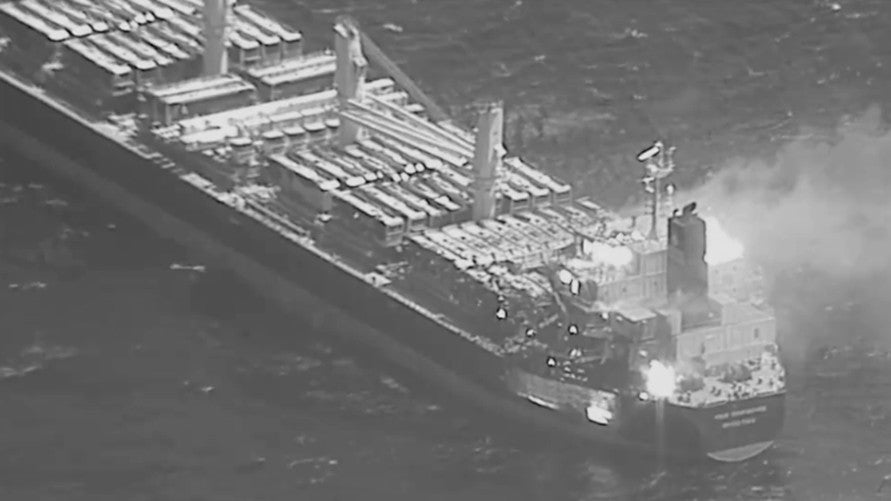
On 2 March, the Houthis celebrated the MV Rubymar sinking in the Red Sea two weeks after it was struck by a missile.
The incident triggered a rise in freight prices and environmental concerns over the 18-mile oil slick left in the sea. The MV Rubymar was also carrying 41,000 tonnes of fertiliser when the two Houthi missiles hit its deck and engine room, which may have increased ocean acidification and threatened local marine ecosystems.
February 2024
There was a Houthi-related incident reported every single day in February.
On 24 February, the Houthis targeted the MV Tom Thor, a US-owned and flagged chemical carrier. In retaliation, the US and UK launched airstrikes on 18 Houthi targets in eight locations across Yemen.
Supported by Australia, Bahrain, Canada, Denmark, the Netherlands and New Zealand, the strikes hit weapons storage facilities, air defence systems, radars, drones and a helicopter.
“We will continue to make clear to the Houthis that they will bear the consequences if they do not stop their illegal attacks, which harm Middle Eastern economies, cause environmental damage, and disrupt the delivery of humanitarian aid to Yemen and other countries,” US Defence Secretary Lloyd Austin said on 24 February.
Two days prior, US forces intercepted six Houthi drones in the Red Sea, but were unable to repel the anti-ballistic missiles launched at the MV Islander. One injury was sustained aboard the British-owned, Palau-flagged cargo ship.
The Houthis also launched multiple attacks on 19 February, including on a Greek grain carrier apparently transporting humanitarian aid to Yemen.
The attack was a culmination of nearly three weeks of constant conflict, with the US and UK again carrying out joint strikes on 36 Houthi targets across 13 locations in Yemen on 3 February.
January 2024
By January, more than 60% of global shipping firms had suspended Red Sea routes until further notice, including Hapag-Lloyd, Maersk and COSCO.
Analysts had begun predicting disruption to supply chains and shipping lanes for several months at least, while pointing to the additional $1m in cost and 14 days in transport time added on by rerouting around the Cape of Good Hope.
11 January saw the first US-UK airstrikes on Houthi-controlled areas of Yemen. ‘Operation Poseidon Archer’ oversaw the launch of more than 150 precision-guided munitions strikes on 60 targets including radars, weapons storage facilities and missile and drone launch sites.
It came a week after the US and its allies warned the Houthis to cease their maritime attacks or face a full military response – and a day after US Navy Seals seized a boat transporting Iranian weapons to the Houthis.
The militia group also launched what UK Defence Secretary Grant Shapps described as its “largest attack to date” on 9 January.
December 2023
Following the US’s announcement of ‘Operation Prosperity Guardian’, a multinational maritime security force in the Red Sea, on 18 December, the end of the year saw a comparative lull in Houthi activity.
Prior to that, the Houthis launched missiles on 11, 13, 14, 15 and 16 December, setting the Liberian-flagged MV Al Jasra alight.
On 9 December, Houthi spokesperson Yahya Sare’e warned that attacks would widen to ships “of any nationality” calling at an Israeli port.
UKMTO accused the Houthis of impersonating Yemeni authorities on 3 December when the group attempted to order a ship to reroute near the port of Hodeidah.
The Houthis also fired drones and missiles at Israel itself, targeting the key port city of Eilat, while Israel struck an arms depot in Sana’a, Yemen’s capital, on 1 December.
November 2023
The Houthi attack which dramatically captured the world’s attention took place on 19 November.
Armed militants landed a military helicopter aboard the moving Galaxy Leader, a Ro-Ro vessel owned by a UK company with ties to Israeli businessman Abraham Ungar. They seized the Galaxy Leader and held its 25 crew members at gunpoint as Palestinian and Yemeni flags were raised.
The hijacking, which Houthi forces released a video of on X, showed the Houthis following through on their threat to attack Israel-linked ships in the Red Sea on 14 November.
“Our eyes are open to constant monitoring and searching for any Israeli ship,” Houthi leader Abdul-Malik al-Houthi said in a live speech reported by the New Arab. “We will search and verify the ships that belong to [Israel], and we will not hesitate to target them and let everyone know that [Israel] is afraid.”
October 2023
Prior to the hijacking, the Houthis only real acts of aggression were several rounds of surface-to-surface missiles at Israel on 31 October, and land-attack cruise missiles at Israel on 19 October.
These attacks, the Houthis promised, would continue “until the Israeli aggression stops”, referring to the Israel Defence Forces’ (IDF) continued offensive in Gaza and the West Bank following Hamas attacks on 7 October.

As of 24 May, 2024, the Red Sea crisis has disrupted hundreds of transportation routes, damaged scores of ships, injured dozens on board, and claimed the lives of multiple naval officers and crew members.
Meanwhile, more than 35,000 Palestinians – the majority of them women and children – have been killed by Israel’s military offensive following 7 October, when 1,200 Israelis were killed and another 250 were taken hostage.




